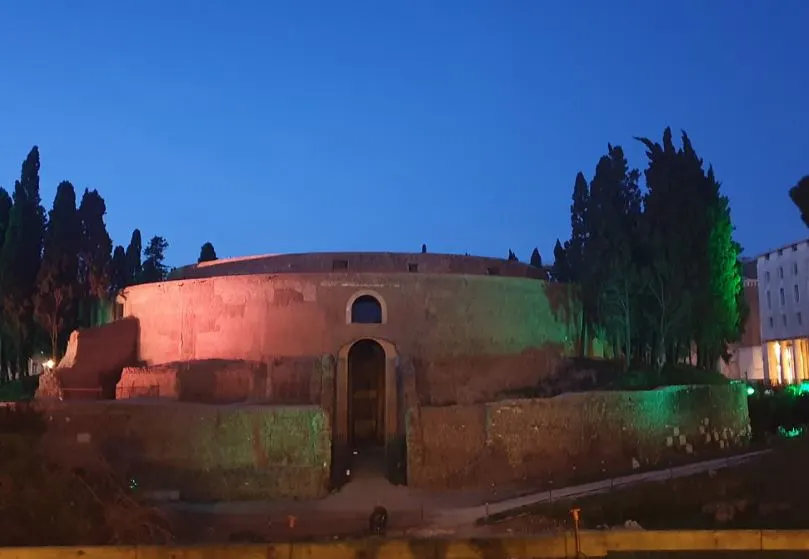One of the most fascinating buildings in Rome was built by the man who literally founded the Roman Empire.
Let’s take a closer look at some interesting facts about the Mausoleum of Augustus, an amazing mausoleum built by the first Roman Emperor.
1. It’s located on the Campus Martius of ancient Rome
The Mausoleum is a huge ancient structure that was built by the first Roman Emperor named “Gaius Octavius” (63 B.C.-14 A.D.), better known as “Augustus.”
The mausoleum was constructed on a large public space in ancient Rome referred to as the “Campus Martius,” it the “Field of Mars.” This highly urbanized public space covered an area of about 2 square kilometers (490 acres) and was situated just north of Capitoline Hill and outside of the heart of Ancient Rome, the Roman Forum.
Today it’s situated in between the church of San Carlo al Corso and the Museum of the Ara Pacis. The latter is a monumental altar built by Augustus as well dedicated to Pax, the Roman goddess of peace. This was to commemorate the fact that he brought peace to the Roman World by ending the shaky Republic.

2. The mausoleum is much bigger than it appears to be
Even though its actual size is hard to judge from the outside, the mausoleum and its surrounding structures are huge. It has a diameter of about 90 meters (295 feet) and a total height of 42 meters (137 feet), making it one of the tallest buildings in Rome at the time.
To further emphasize its significance, it was topped with a huge bronze statue of Augustus himself. This bronze statue was in turn surrounded by cypress trees.
The plan of the structure is circular and consists of several rings, all connected with corridors leading up to the inner chamber which featured the ashes of the members of the Imperial family who were buried there.

3. It was one of the first buildings constructed by Augustus
It was one of the first buildings that the first Roman Emperor commissioned. This means that it was completed shortly after the decisive Battle of Actium in 31 B.C.

The huge structure was completed in the year 27 B.C. The Ara Pacis Augustae, the monumental altar right next to it, was built well over 2 decades later and was officially consecrated on January 30, 9 B.C.

4. It featured two obelisks which are now in other locations in Rome
The arched entryway of the mausoleum used to be flanked with two pink granite obelisks, but these have been moved over the centuries to other locations in Rome.
One of these can now be found on the Esquiline Hill on the northwest side of the Basilica of Santa Maria Maggiore, a major Basilica in Rome that was completed in the 18th century.
The other one decorates the Quirinal fountain on the hill and piazza with the same name.
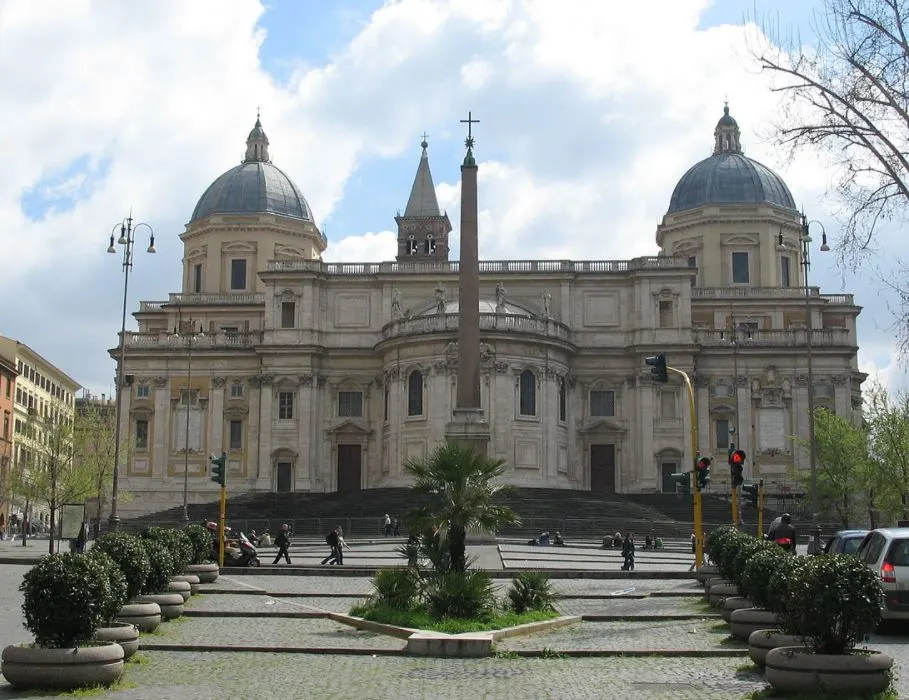
5. It was remarkably a popular spot for ancient Romans
Emperor Augustus was a master in keeping the people of Rome happy. He referred to himself as “Princeps Civitatis,” which translates to “First Citizen,” even though he redesigned the government in such a way that he was pretty much a dictator with the ultimate power in the end.
Even though he built this structure as an enormous Mausoleum for himself, he also commissioned the design of a landscaped park surrounding it. This eventually became a pleasure garden for the people of Rome and a popular spot in the highly urbanized city that Rome already was at the time!
His building frenzy to improve the city of Rome led him to speak the words:
Behold, I found Rome of clay, and leave her to you of marble (Marmoream se relinquere, quam latericiam accepisset).
Augustus quote.
6. A particular plaque decorated the entrance of the structure
Because the mausoleum eventually served as his tomb, the life of the Emperor, and more specifically his accomplishments and victories, were documented on two bronze plaques that were decorating the entrance near the two granite pillars.
The engravings on these plaques are referred to as the “Res Gestae Divi Augusti,” a document he had written himself and which he included in his will.
The only virtually complete version of this text was found in the Temple of Augustus in Ancyra, modern-day Ankara, Turkey, even though this text was carved into countless monuments and temples all across the Roman Empire.
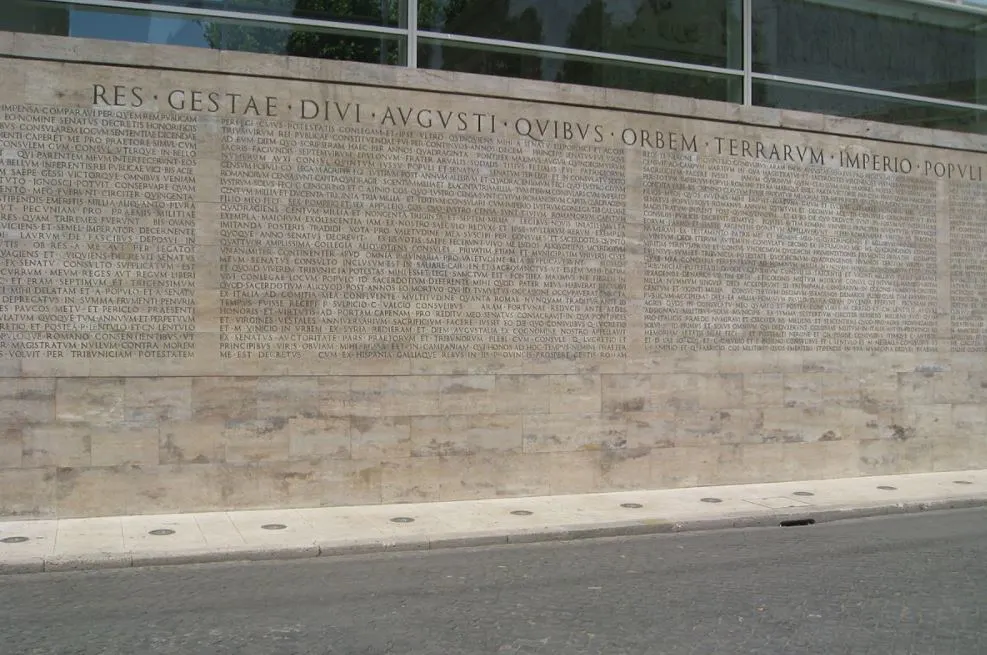
7. Multiple prominent ancient Romans were buried here
Augustus wasn’t the only member of the Imperial family that was buried here. Just as in the Mausoleum of Hadrian, a building on the opposite side of the river now referred to as the Castel Sant’Angelo, it served as the tomb of multiple people.
The first family member to be buried here was Marcus Claudius Marcellus in 23 B.C. He was the son of Augustus’ elder sister Octavia Minor and Augustus named the Theatre of Marcellus in his honor.
Multiple other members of the Imperial family were buried here, and multiple Roman Emperors as well, including Tiberius, Caligula, Claudius, and Nerva. The latter was the final person to be buried here in 98 A.D.
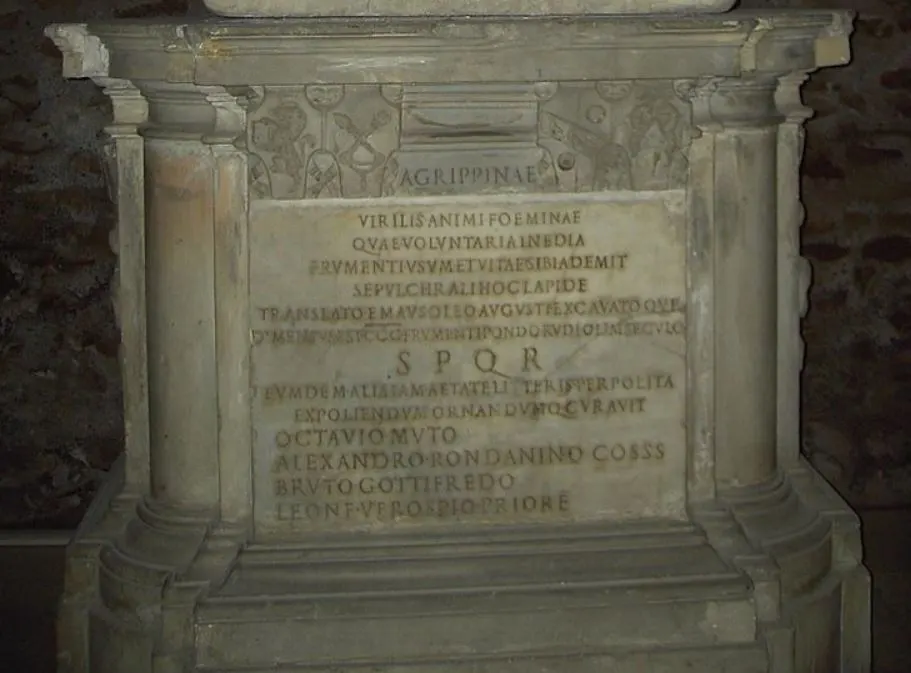
8. It’s unclear what happened to the urns and ashes of the imperial family
So where did the golden urns containing the ashes of nearly 2 dozen people go?
The history of the remains of the people buried at the Mausoleum of Augustus remains unclear, but the most popular story is that the urns were stolen and the ashes scattered in the year 410 A.D. This was the year that the Visigoths under the command of their leader Alaric sacked Rome.
While these Germanic people destroyed a lot of the city and plundered whatever they could grab, they didn’t damage the Mausoleum itself at that time.
Whether or not this actually happened remains unclear and has been questioned as well.

9. The mausoleum was given a completely different name by the 10th century
Regardless of whether or not the Visigoths scattered the ashes of Augustus himself or not, the structure itself was left to deteriorate for multiple centuries.
By the 10th century, the building was not even visible anymore because it had been buried under multiple layers of earth and was overgrown with trees.
By then, the mausoleum was even referred to as the “Mons Augustus” (Augustus Hill), and a chapel dedicated to the Archangel Michael was built on top of it.
We’re pretty sure that the proud Roman Emperor Augustus wouldn’t have liked that, at all!

10. The structure has had multiple different purposes over the centuries
The Augustus hill grew further in the following centuries and its summit was turned into a fortified castle at one point in the 12th century. This stronghold was eventually dismantled and the area was held by multiple powerful families in Rome in the following centuries.
The area was used as a garden during the Renaissance, the building was used as a circus in the 19th century, and in the early 20th century it was used as a concert hall called the “Augusteo.”
That’s quite a range of functionality, don’t you think?
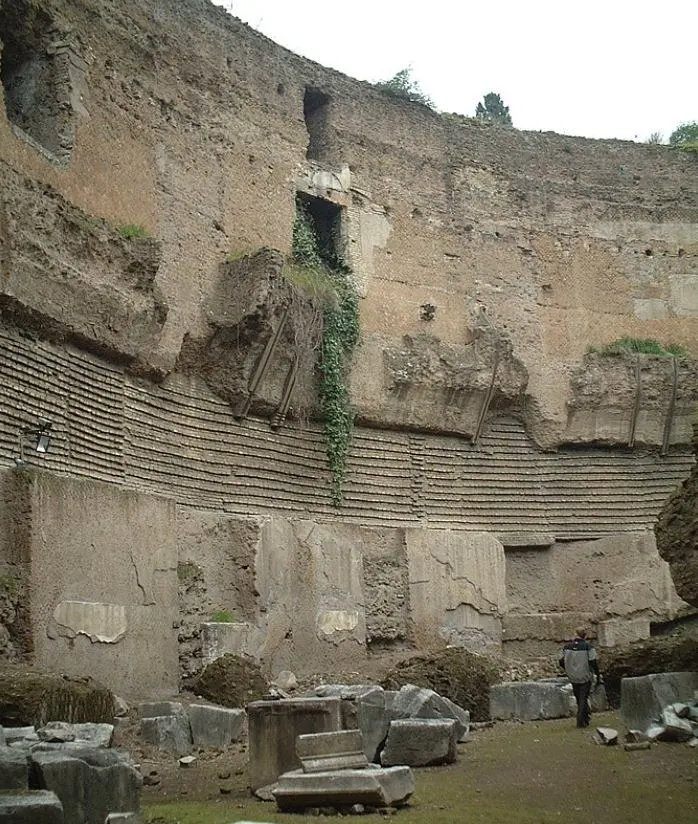
11. Fascism transformed the mausoleum back to an ancient landmark
When Benito Mussolini came to power in the 1920s he closed this concert hall and turned the mausoleum back into a historical monument in the center of Rome, and he had a good reason to do so.
It’s no secret that Mussolini aimed to restore the former glory of the Roman Empire, and in that sense, he admired Augustus tremendously. He even considered himself to be “Augustus Reborn,” and aimed to achieve the same dominance as his hero.
Because of this, the Mausoleum of Augustus was partially restored to its former glory as well. The centuries following the Second World War it was unfortunately left to deteriorate.

12. The Mausoleum has been restored and reopened in March 2021!
Since 2017, a serious restoration project has been conducted which allowed this monumental landmark in Rome to reopen to the public for the first time since the 1970s.
The project cost a total of 10 million euros and 40% of this amount was funded by Telecom Italia, while the city of Rome funded 40% of this amount. The interior of the structure displays multi-media projections of both modern-day Rome and ancient Rome.
It’s definitely one of the most intriguing tourist attractions in Rome that you simply must add to your bucket list!
